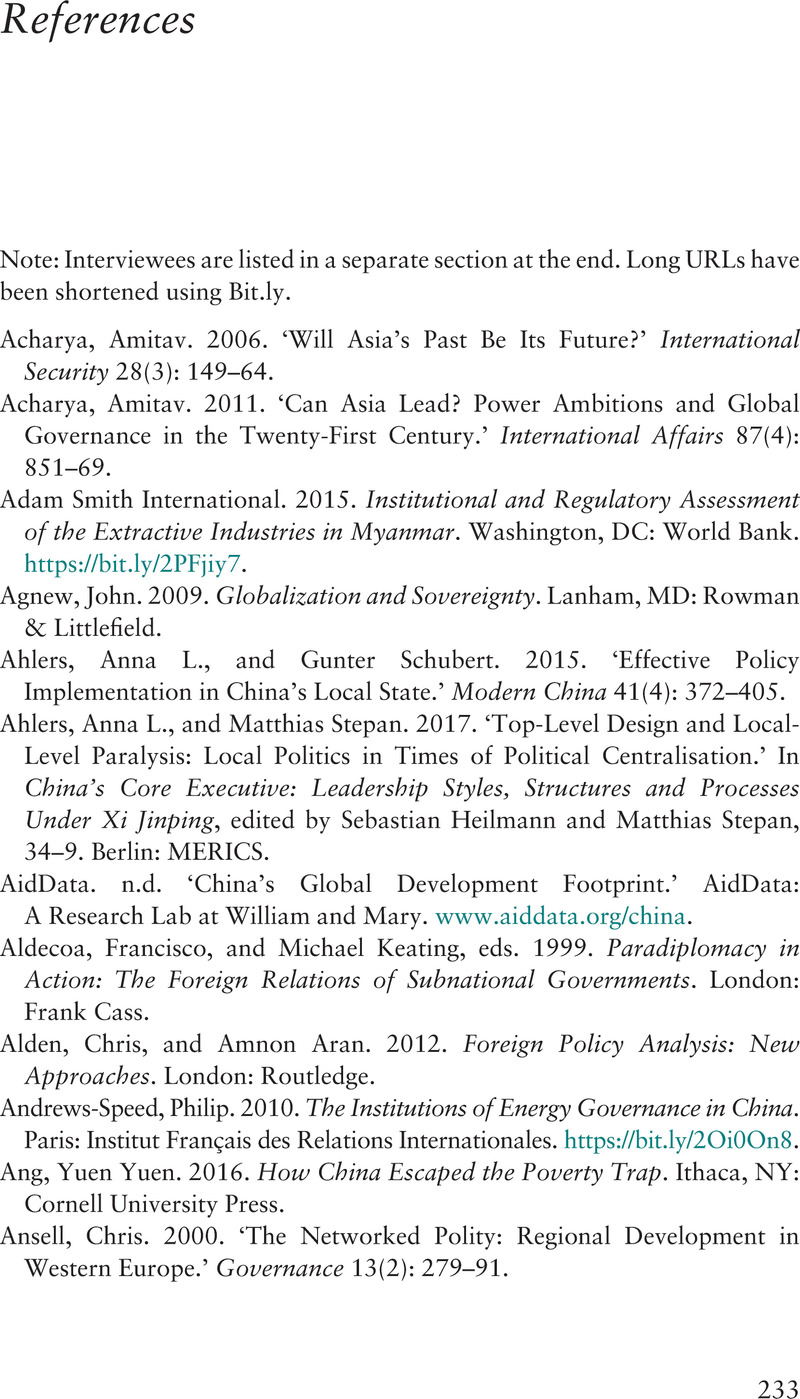Book contents
- Fractured China
- Fractured China
- Copyright page
- Dedication
- Contents
- Figures
- Maps
- Tables
- Acknowledgements
- Abbreviations
- Introduction
- 1 State Transformation and Chinese Foreign Policy
- 2 State Transformation and the South China Sea
- 3 Chinese Non-Traditional Security Governance in the Greater Mekong Subregion
- 4 China’s International Development Financing
- Conclusion
- References
- Index
- References
References
Published online by Cambridge University Press: 21 October 2021
- Fractured China
- Fractured China
- Copyright page
- Dedication
- Contents
- Figures
- Maps
- Tables
- Acknowledgements
- Abbreviations
- Introduction
- 1 State Transformation and Chinese Foreign Policy
- 2 State Transformation and the South China Sea
- 3 Chinese Non-Traditional Security Governance in the Greater Mekong Subregion
- 4 China’s International Development Financing
- Conclusion
- References
- Index
- References
Summary

- Type
- Chapter
- Information
- Fractured ChinaHow State Transformation Is Shaping China's Rise, pp. 233 - 287Publisher: Cambridge University PressPrint publication year: 2021
References
References
Note: Interviewees are listed in a separate section at the end. Long URLs have been shortened using Bit.ly.

